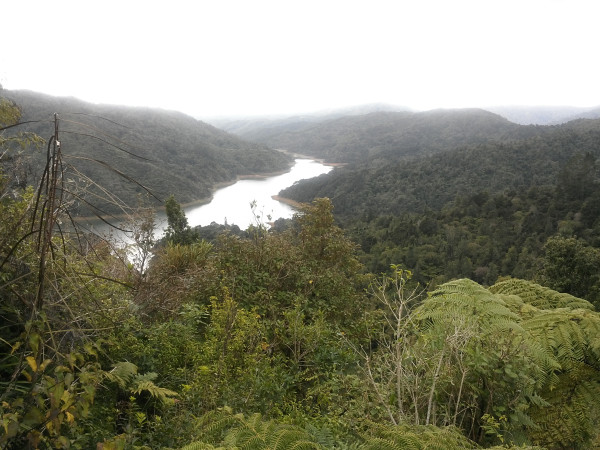AUCKLAND COUNCIL’S 1080 DROP IN THE HUNUA RANGES
24.8.2022

Auckland Regional Public Health Service has placed a number of conditions on a proposed pest control programme in the Hunua Ranges to protect public health.
The operation
Auckland Council is conducting an aerial 1080 bait operation from late August onwards this spring. Sodium fluoroactetate (1080) will be applied by helicopter to around 20,501 hectares of parkland in the Hunua Ranges. This will include the Waharau and Whakatiwai regional parks; Department of Conservation (DoC) administered lands, including the Mataitai Conservation Area, and some adjoining private land.
The purpose of the operation is to significantly reduce pest numbers and maintain the natural habitat of the Hunua Ranges. Pest levels have risen again after the highly successful 2018 and 2015 operations.
The Hunua Ranges is a source of approximately 65% of Auckland’s drinking water and houses four large water reservoirs; there are also adjoining neighbours and visitors whose risks need to be considered.
Role of ARPHS
Auckland Regional Public Health Service (ARPHS) has a regulatory role in approving Auckland Council’s aerial 1080 operation application, with any conditions thought necessary to protect the health of the public. ARPHS has worked closely with Council to ensure that conditions protect neighbours, park visitors, and the drinking water reservoirs during and after the 1080 application.
Measures to protect the public include closing the park while 1080 is being aerially applied by helicopter, and until track clearances have been completed. More track clearances will be completed if there has been insufficient rainfall to cause bait degradation. Bait degradation reduces the toxicity of 1080 cereal baits by leaching of the active ingredient.
Water reservoirs will be protected by having:
- a ‘no fly zone’ designation
- buffers around water reservoirs to exclude any 1080 baits from being dropped within this zone,
- exclusion buffers around the water intakes
- isolation of reservoirs from the water treatment plant while bait is being laid and before it becomes degraded
- extensive water monitoring for 1080
- reconnection of reservoirs to the water treatment plant only after water tests show that no 1080 has been detected
- monitoring and removal of dead carcasses in the vicinity of the water reservoirs.
Risks to health from water
There is no known risk to people’s health from drinking water sourced from reservoirs in the Hunua Ranges. In addition to the protections listed above to both detect and prevent contamination of the public drinking water supply, Council have shown that even if a full load of 1080 being carried in a helicopter bucket were to accidentally drop into one of the Hunua reservoirs, the concentration of 1080 in water would remain undetectably low and present no risk to public health.
Risks to children from 1080 cereal baits
The greatest potential risk from 1080 is to young children who may come across a bait and put it into their mouths. Young children explore the world by putting objects into their mouths and are at greater risk of poisoning as a result.
To prevent young children from potentially coming across a 1080 bait on a track in the Hunua Ranges, the park will be closed while bait is being dropped and this will be followed by track clearances. The number of track clearances required will be determined by track usage and weather, particularly rainfall.
Symptoms of 1080 poisoning
Depending on the dose ingested symptoms of 1080 poisoning may occur within 30 minutes of exposure and progress rapidly. Lower doses may take up to three hours to produce symptoms. Symptoms may include abdominal pain and vomiting, rapid breathing, irritability/ agitation, and may progress to confusion, collapse, seizures, and unconsciousness.
Treatment/management of poisoning
People with suspected 1080 poisoning must seek emergency hospital medical treatment immediately. Any remaining material suspected of being contaminated with 1080 should be collected and taken with the patient to hospital.
Notification of suspected 1080 poisoning
Any suspected case of 1080 poisoning, must be referred to ARPHS’ Medical Officer of Health by the attending doctor, as per the requirements of the Health Act 1956, and the Hazardous Substances and New Organisms Act 1996. The Medical Officer of Health at ARPHS will investigate how the poisoning may have occurred, ensure contaminated items are collected for testing, and ask for any required remedial action.
Other resources
Auckland Council – operational information including park closure timetable
DoC - impact of 1080 on pest and native species and other research results
EPA – regulatory information on the use of 1080 in NZ
National Poisons Centre – for advice about 1080 poisoning
Watercare - water testing information
For health advice call Healthline for free anytime on 0800 611 116
News
- All
- Alcohol
- Alert
- COVID-19
- Dengue fever
- Foodborne illness
- Healthy Auckland Together
-
Measles
- Measles case on flights between Auc…
- Measles case on Samoa to Auckland f…
- Check you’re immune to measles befo…
- Measles case on Samoa to Auckland f…
- Measles case on Fiji to Auckland fl…
- Measles cases on two Samoa to Auckl…
- Measles case on Samoa to Auckland f…
- Measles case on Samoa to Auckland f…
- To view more click here
- Meningococcal
- Mumps
- News
- Resources and surveillance
- Smokefree
- Travelling
- Whooping cough